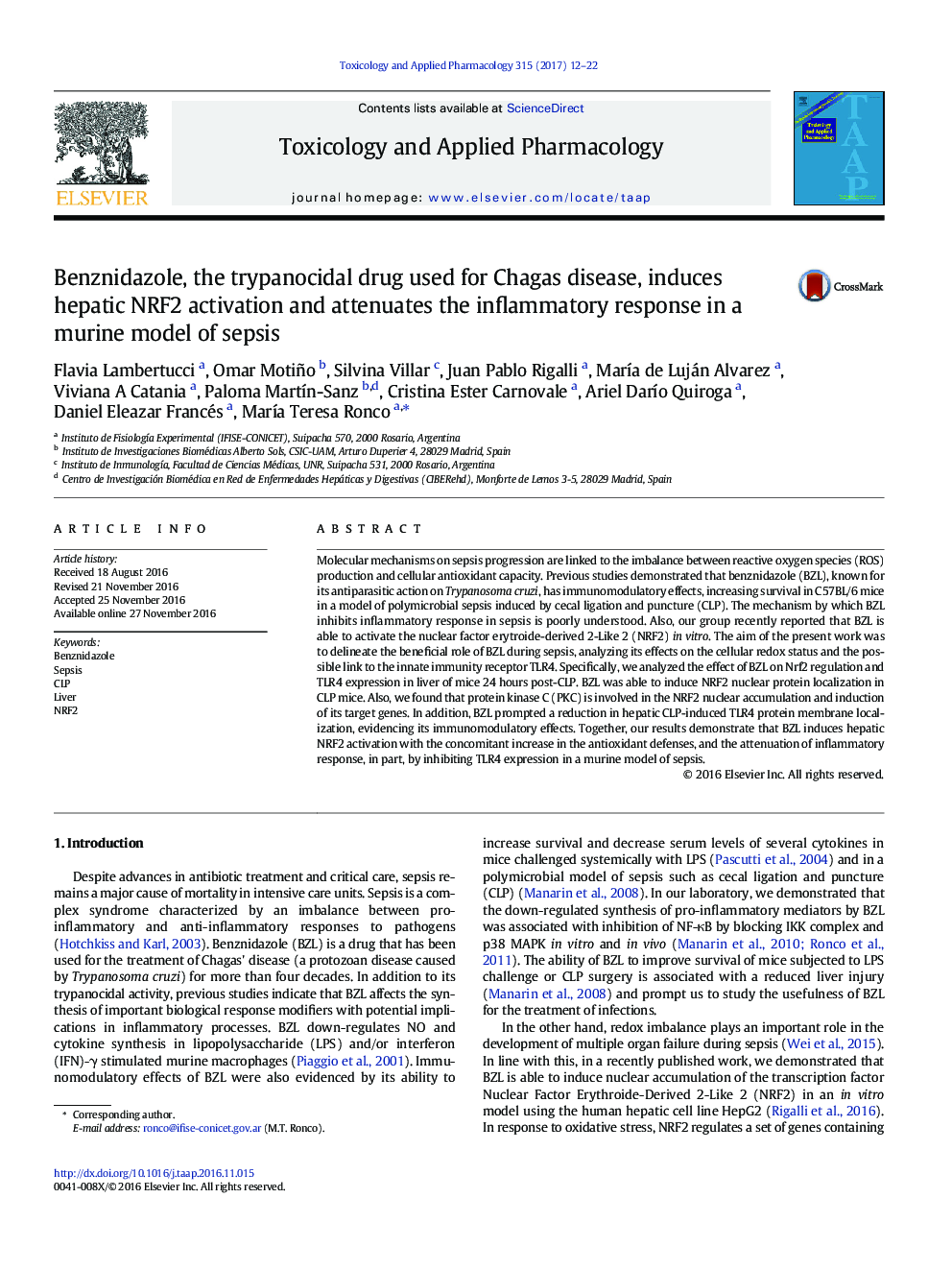| کد مقاله | کد نشریه | سال انتشار | مقاله انگلیسی | نسخه تمام متن |
|---|---|---|---|---|
| 5558553 | 1561147 | 2017 | 11 صفحه PDF | دانلود رایگان |

- BZL improves survival rate after polymicrobial sepsis
- BZL enhances hepatic NRF2 nuclear accumulation in a model of sepsis, in part, by a mechanism dependent on PKC activation
- BZL-enhanced NRF2 induction regulates antioxidant enzymes and increases antioxidant cellular defenses in sepsis
- BZL blocks liver ROS production and ROS-induced TLR4 plasma membrane expression in septic mice
Molecular mechanisms on sepsis progression are linked to the imbalance between reactive oxygen species (ROS) production and cellular antioxidant capacity. Previous studies demonstrated that benznidazole (BZL), known for its antiparasitic action on Trypanosoma cruzi, has immunomodulatory effects, increasing survival in C57BL/6 mice in a model of polymicrobial sepsis induced by cecal ligation and puncture (CLP). The mechanism by which BZL inhibits inflammatory response in sepsis is poorly understood. Also, our group recently reported that BZL is able to activate the nuclear factor erytroide-derived 2-Like 2 (NRF2) in vitro. The aim of the present work was to delineate the beneficial role of BZL during sepsis, analyzing its effects on the cellular redox status and the possible link to the innate immunity receptor TLR4. Specifically, we analyzed the effect of BZL on Nrf2 regulation and TLR4 expression in liver of mice 24Â hours post-CLP. BZL was able to induce NRF2 nuclear protein localization in CLP mice. Also, we found that protein kinase C (PKC) is involved in the NRF2 nuclear accumulation and induction of its target genes. In addition, BZL prompted a reduction in hepatic CLP-induced TLR4 protein membrane localization, evidencing its immunomodulatory effects. Together, our results demonstrate that BZL induces hepatic NRF2 activation with the concomitant increase in the antioxidant defenses, and the attenuation of inflammatory response, in part, by inhibiting TLR4 expression in a murine model of sepsis.
182
Journal: Toxicology and Applied Pharmacology - Volume 315, 15 January 2017, Pages 12-22